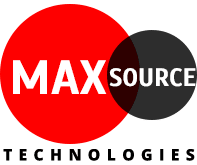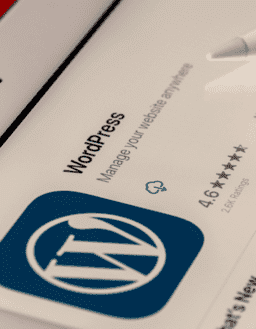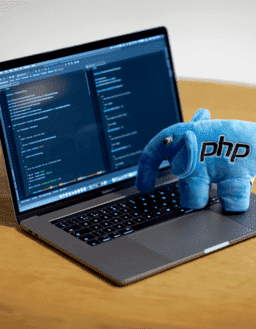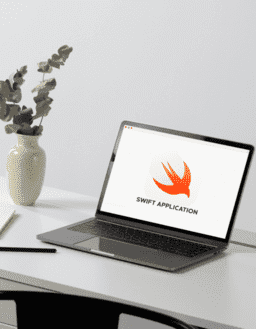
Smart automation and data-driven solutions that promise to improve decision-making, increase productivity, and streamline operations are gaining traction among businesses across the US. The success stories of business executives who seem to easily use technological solutions to outperform other companies feed the momentum. Many small and medium-sized companies are thus making investments in these systems in an attempt to produce such results.
But even if the use of tools from top AI companies and other cutting-edge solution providers is increasing, many businesses are not impressed with the outcomes. Frequently, the anticipated increases in efficiency and performance do not come to pass. What exactly isn’t working?
The adoption of the technology is the problem, not the technology itself. Many companies, particularly small and mid-sized ones, don’t realize how much work it actually takes to successfully incorporate these tools into their current systems.
Mistaking Tools for Strategy
Assuming that buying highly rated software or working with top AI companies promises change is one of the most often made mistakes. Most people agree that the correct tool, especially from a well-known company, will address operational problems overnight. Though tools, including those driven by the best AI, are only one component of the answer.
Whether the tools fit the particular objectives and processes of the company determines success. Even powerful systems from top AI technology companies will collapse without that alignment. Companies must begin their road of integration by asking: What are our goals? Is consumer retention better now? Less running expenses? Improved foresight?
Strategic clarity is necessary for wise investments. Tools should be chosen according to their capacity to produce properly defined results, not on their popularity. The goal of many AI for small business initiatives is to choose a solution that works for the issue at hand, not to discover the most eye-catching one.
Underestimating the Role of Data Readiness
Data assumptions represent yet another significant oversight. Simply because they have access to their current data, many companies feel it is ready for use. But efficient automation won’t be supported by data that is distributed around departments, formatted inconsistently, or riddled with duplicates.
Organizations must invest in data preparedness before including any smart product. This means getting the data ready for use by maintaining it, organizing it, and standardizing it. Artificial intelligence in business applications mostly relies on consistent data. Regardless of tool sophistication, if the inputs are faulty, the outputs will be similarly erratic.
Essential are data governance, frequent audits, well-defined access control, and input policies. Without these, using artificial intelligence or automation techniques turns from a benefit to a liability.
Overlooking the Infrastructure Gap
Furthermore, businesses frequently overestimate how well their current systems can adapt to new tools. Modern tools are widely assumed to be able to plug straight into legacy systems with minimum effort. Most of these older technologies were really not meant to interact with more modern, intelligent engines.
Including a product from one of the AI technology companies could call for a major internal architectural reconfiguration. This could call for configuring middleware, building APIs, or maybe moving to a cloud architecture. Unfortunately, these backend needs are sometimes not given enough thought during the first planning stage, which results in lackluster outcomes, inflated budgets, and delayed schedules.
For scalability and compatibility, smart integration calls for ahead planning. Companies should expect the technical foundation required and be ready to modify their platforms in line with this.
Ignoring Change Management
The technical aspects of technology rollouts, such as software installation, data source connections, and configuration settings, are frequently given a lot of attention. However, a major contributing factor to the failure of these attempts is the neglect for the human aspect.
Change management is important; it is not optional. Not only IT teams but all levels of employees must know how new tools will affect their regular tasks. Whether it’s a change in reporting methods or a new dashboard, user adoption will stagnate without appropriate training and communication.
Too often, corporations believe that a technology from one of the artificial intelligence companies would fit right out of the box. Teams must, however, have clear knowledge of how the technology supports their work, ownership, and role clarity if they are to undergo real transformation. Integration is a cultural change as much as a technological project.
Chasing Complexity Instead of Simplicity
Some companies get caught in the trap of trying to emulate big companies. High-end solutions, numerous interconnections, and intricate systems are what they consider to be necessary for success. Complexity isn’t necessarily better, though; it often overburdens teams and drains resources.
Simple, focused use cases help small and mid-sized companies more than anything else. With little cost, automating lead answers, inventory forecasting, or client communications simplification can have a disproportionately large impact.
Choosing tools from AI companies should be based on what will provide the most quantifiable value in the shortest amount of time. Though they may appear great, large-scale, enterprise-level systems might not be the best choice for a small AI business trying to grow effectively.
Failing to Define Clear Metrics for Success
A lot of organizations neglect to monitor what matters after investing in new technologies. While the rollout is intriguing, there isn’t much follow-up in terms of outcome evaluation. Without well-defined criteria, one cannot determine whether the integration was successful.
One must first establish reasonable objectives. Are staff members saving time for you? Lowering the number of human mistakes? Rising consumer involvement or sales? These are the standards by which investments make sense. The AI for small businesses is particularly susceptible to skipping this phase, which could result in resource waste and disillusionment.
One-time performance appraisals are not appropriate. Regular check-ins let companies evaluate what is working, what is not, and how procedures might change.
Assuming It’s a One-Time Project
Integration is viewed as a one-time event by far too many businesses. However, tools don’t exist in a vacuum, particularly those from top suppliers of AI business solutions. They evolve. Business needs change; user behavior changes; features update.
Continuous optimization is essential. Monitoring use, updating training, changing setups, and scaling as necessary follow from this. Artificial intelligence in business is a journey rather than a destination. Smart integration must be seen by companies as a dynamic component of their operations rather than a fixed setup.
Conclusion
Businesses should pause and think before making another investment round. Today, the tools are more powerful than ever, but how well they work relies on how carefully they are used.
Over-engineered solutions are constantly outperformed by those that are straightforward, strategically aligned, and internally clear. Even small instruments can have a big influence if you have the right outlook and a clear plan.
Focus on using artificial intelligence to address a practical business issue rather than aiming for the best AI platform available. Furthermore, it’s not just about what you utilize for successful integration. How you use it is what matters.
Frequently Asked Questions
1) Do I need an AI team in my company to start using smart automation?
Not all the time. Many businesses that are developing work with outside partners who have the technical skills you need and can help you reach your internal goals. A team that is knowledgeable about the technology and your business environment is essential.
2) Can my current systems function with AI tools?
They can, albeit it will rely on how advanced and adaptable your present systems are. When necessary, a knowledgeable development team can assist with compatibility testing, low-friction integration suggestions, or the building of specialized bridges.
3) What enables AI tools to use business data?
Data ought to be consistent, up-to-date, and organized. An AI deployment-experienced remote team will assist you with organizing data, eliminating errors, and ensuring it’s prepared for more than simply dashboards.
4) If the business is new to integrating artificial intelligence, where do they begin?
Start small, using a single, quantifiable goal, such as anticipating high-priority leads or minimizing manual follow-ups.















































